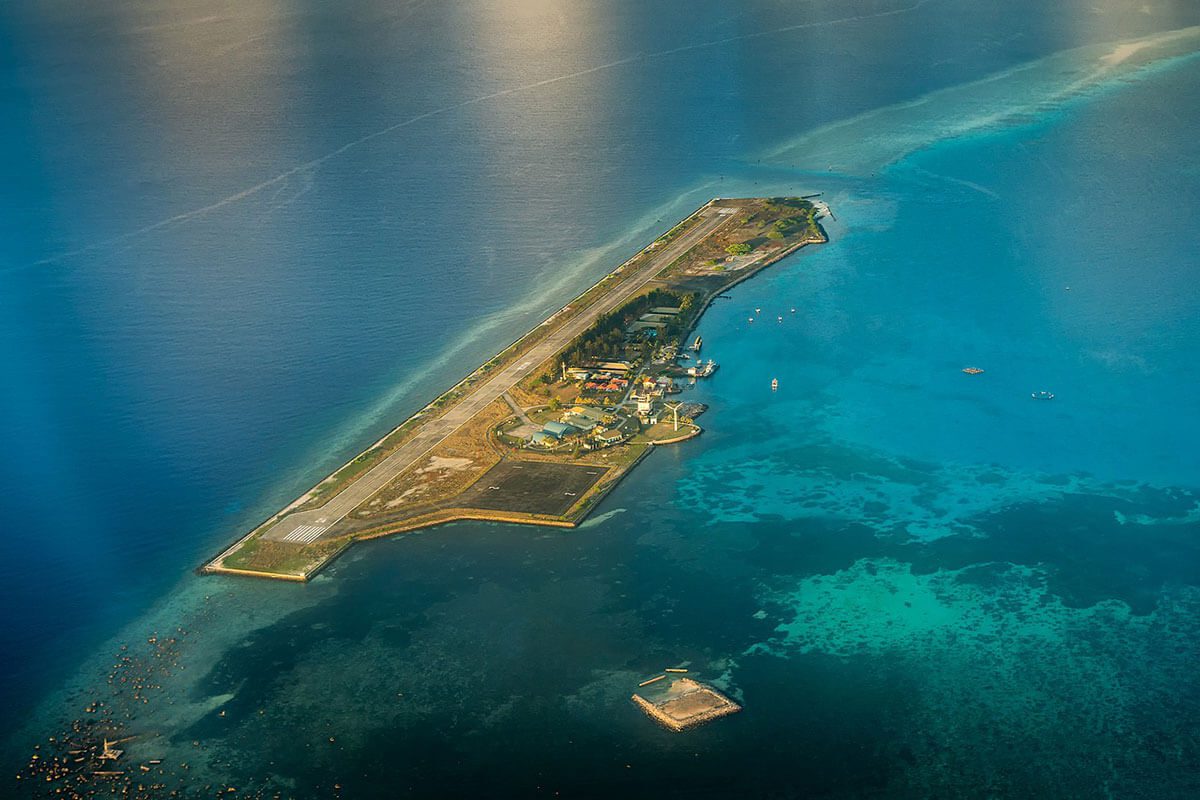

Living underwater sounds interesting and intimidating at the same time. Experts are already working on it. But how far has the research gone? Is it feasible to live underwater for a lifetime? That’s the point!
The Smart Floating Cities – A Man-made Island In China
To find a sustainable alternative to land-based cities, a British and Chinese-based design firm called AT Design Office came up with an incredible concept of floating cities to meet the requirements of the ever-increasing population.
A Chinese engineering and construction firm called CCCC (China Communications Construction Company, Ltd) commissioned AT Design Office to design the floating cities using the same technologies that were used in building the 31-mile long bridge that links Hong Kong, Zhuhai, and Macau. A portion of the bridge is constructed underwater as a tunnel that is connected by a 150-metre-long precast concrete box. AT Design Office was appointed to use this technology to design a masterplan for a 10-square-kilometre smart floating city cum island.
To talk about its technical aspects, the floating cities will be composed of hexagonal modules that have layers that are located both above and underneath the water surface. The island will be fully connected with submarines through interwoven canals and electric cars that will serve as primary modes of transportation. The city will also have a huge dock for ships so that it remains well connected with the land.
Sustainability being the focus, the project will have vertical farms and fish hatcheries to help food production on the island. Apart from this, the smart floating cities will also be equipped with environmentally-friendly trash disposal and recycling systems.
Submerged Smart City In The Waters of Japan


According to the design, Ocean Spiral will be a giant sphere measuring 500 meters in diameter and sitting just below the surface of the ocean. The spherical metropolis will have residential areas, hotels, and commercial complexes. It will be linked to a building situated 4000 metres below near the seabed via a nine-mile long path that winds through the sea. This building called “Earth Factory”, on the sea bed will serve as a mining hub for scientists to extract natural resources such as copper and zinc, and to explore potential ways to obtain energy resources from the ocean floor. In addition, gigantic turbines would be placed on the ocean floor to draw power from the waves, tides, and currents. The nine-mile-long spiral path would convert it into energy and transmit it to the metropolis beneath the water surface. This path will be equipped with a string of generators that will convert energy by what is known as ‘ocean thermal energy conversion.’
The Japanese scientists are planning for the project by keeping the design as sustainable as possible. They envision using microbes called methanogens to produce methane by converting carbon dioxide captured from the surface. This will act as a major source of power.
The smart city will also be equipped with fish hatcheries and a desalination plant to convert the sea water into potable water.
Shimizu has begun working towards transforming the vision into reality by the collective intelligence of experts from Tokyo University, government departments and energy firms. Although the technology needed to start construction is not yet available, experts are positive that it will be ready within the next 15 years. Besides, the entire project will take just five years to complete. However, the main concern is the investment that is estimated to be as huge as three trillion yen ($25 billion). Even for that, Shimizu hopes to gather it through public and private funding.
Floating Archipelago For Future Human Settlement
The vision of floating archipelago or a group of man-made floating islands connected together to build a smart city is nearing reality. Seasteading Institute, a nonprofit firm in Oakland, California was established a decade ago with a vision to build permanent human settlements on waters. Currently, the institute is working on constructing a dozen floating islands in the waters of French Polynesia. The interlinked islands will feature residential apartments, underwater restaurants, commercial buildings, schools, and hotels.
French Polynesia was chosen to be the ideal place as it is close to the equator, remains warm and is not affected by high waves and cyclones. Moreover, the region is bestowed with lots of natural wave breakers.
The project began with a vision to build a regulation-free utopia that now has extended into a goal to build a smart city that can fight the rising sea levels which are anticipated to increase more than six feet by the end of this century.
Beginning in 2017, the French Polynesian government permitted the Seasteading Institute to start testing the ocean waters. Surprisingly, the non-profit aims at building the floating archipelago by 2020.
As far as the design is concerned, there are two proposed concepts. The first one will have buildings in groups. And the second will be a horseshoe-shaped island that will comprise more of the green space. Food production will mostly depend on aquaculture including aquatic plants and fish. The entire archipelago will be powered by solar energy while constantly gathering and recycling water from the ocean.
Seasteading Institute will be involved in planning and construction whereas the startup Blue Frontiers would manage the islands. Interestingly, the $60-million project will raise funds unconventionally using cryptocurrency.
The new floating archipelago will be a hope to combat rising sea levels and climate change that are constantly threatening the world. According to Seasteading Institute, floating islands could be the option to tackle two of the biggest global problems including sea level change and lack of startup innovation in governance.
The project is also seen as “an incubation hub” that can help on developing wave energy generation technologies, floating solar, algae-based food and fuel, floating solar, sea water air-conditioning (SWAC), materials science, desalination and marine education.
Living in smart floating cities is something we might see in the near future. In fact, Dubai already has floating homes built on sea. But having a human settlement inside the oceans is something which needs more efforts in the form of research. Technically experts know that building structures underwater is feasible only till a depth of 50 metres. Going below that we need materials that can withstand extreme ocean pressure. Besides, investments will be no less than billions.
However, it is really not impossible to build smart cities underwater. If we can think of colonizing Mars, why can’t we dive deep to live in our very own planet’s waterbodies?



































